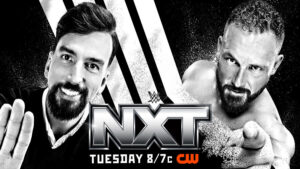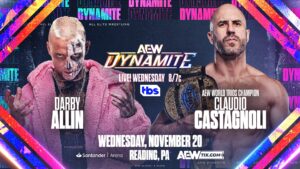Why are some fans asserting that Sting may be better than The Undertaker for now? This question goes beyond the obvious wrestling culture war of WWE vs. AEW and reveals a lot about wrestling fans’ changing values and our parasocial relationships with wrestlers.
More than Wrestlers
This is part two of an analysis and examination of two wrestling figures who are more than merged men. The Undertaker and Sting are symbols. They represent not only wrestling’s past. Their actions and words are still powerful and hold weight.
What they say about the present and future of this sport means more. Each represents similar but contrasting philosophies of wrestling despite what seems like a similar history.
Previously, I unpacked both the legend’s final runs and retirements (here). In this analysis, I am going to dig into the complex issues around why different groups of fans view each wrestler and man.
But please do note the keywords in the opening question: “may” and “for now.” The facts shaping opinions, like at any point in time, are like the wrestling card. They are subject to change. For now, this statement might be true for some fans. Feelings towards each legend also run deeper than being pro-AEW and pro-WWE.
It goes beyond the wrestler characters. It connects to what each man represents to different fans in three main areas. Their history behind the scenes, their actions, and their beliefs on what wrestling should/could be.
As much as possible, this will be an objective piece in which relevant biases are going to be dissected. However, there are already bombs hidden in some of the letters on my keyboard, like a game of Minesweeper.
Understanding the Narratives
We need to start by unpacking a concept that my analysis is built around.
Historiography.
This means the study of how people have discussed history itself—meta, I know. It’s about understanding that historians and commentators writing about figures and historical periods judge the past and present based on their biases. Simply, it’s about studying trends and why people have specific beliefs.
As fans in the digital age, we have access to various platforms that allow us to speak our minds. We are all commentators and historians. We review and comment on the past.
Also, we all have biases based on our preferences in wrestling. We all have opinions, and many of us are very happy sharing them. What’s happened in the Internet Wrestling Community since AEW began is a culture war.
Every aspect of wrestling, from A to Z, is up for comparison. Matches, events, and people are weaponized in the debate by some to prove “my company is better than yours.” Attendance, booking, characters. Everything from the wrestlers themselves to a company’s insistence on zooming in and out camera shots.
It’s up for praise and criticism, including the fanbases themselves. It’s not surprising Sting and Undertaker, because of what they represent, have been weaponized by some fans in this debate.
We need to recognize that when discussing Sting and The Undertaker, AEW and WWE, or any wrestling company, there are biases. It’s important to understand how and why other fans feel a certain way.
We should also recognize that this culture war divide goes beyond wrestling. Western culture has moved to tribalism. Could you look at politics and discussions of social concerns? Wrestling, in this sense, isn’t unique. These emotional attachments to preferences beyond our favorite wrestling company can, at points, overlap with our views of a wrestler.
More Than Company Men
Both Sting and The Undertaker have become symbols for their perspective sides. Yet it’s too simplistic to say that The Undertaker is WWE and Sting is AEW. Only The Undertaker is a firm company man whose loyalty, longevity, and philosophy of wrestling are attached firmly to WWE. Both mean more than just their respective company.
The Holdout
Prior to AEW, Sting competed with various companies, including WWE. Sting is still synonymous with WCW and, to a lesser extent, with some fans of TNA Wrestling. AEW has presented Sting as a legend of wrestling history. Sting is a bridge between eras, joining WCW with its spiritual successor.
Beyond WCW, however, Sting’s legacy is also symbolic of the Southern style of wrasslin’ Vince McMahon, who was deemed inferior to his sports entertainment. The type of wrestling Triple H asserted in 2022 was only a “tiny thing happening in bars,” not arenas. This was, of course, promotional propaganda.
WWE has, over time, told the story of wrestling with its company as the center of its universe. By contrast, AEW has not tried to claim ownership of history.
Sting was seen as the last holdout against sports entertainment. Even when Sting did debut in WWE, he was “The Vigilante” and seemed to be fighting The Authority. For some fans, the faction was interpreted as a thinly veiled representation of WWE’s management. Sting’s only WrestleMania match was about WWE vs. WCW.
Challenging for the WWE World Heavyweight Championship is remembered for ending Sting’s career for a time. A WWE Hall of Fame Induction felt deserved, but a consolation prize.
Sting never assimilated and became a WWE guy. When Sting joined AEW and began wrestling again, the icon became a symbol of resistance again.
Old School
The Undertaker is synonymous with WWE and yet a paragon of old-school wrestling tradition. Despite WWE’s branding of modernizing and changing wrestling, the backstage culture and mentality of traditionalism persisted. The Undertaker was himself a holdout, being one of the last active WWE wrestlers to have come through the territory system.
Described by Jim Ross as “the conscience of WWE,” ‘Taker was a locker-room leader behind the scenes during various challenging moments. Taker has served as a general, mediator, enforcer, and father figure in the promotion. From its peaks and valleys, good and bad, Taker has been relied upon in the ring and behind the scenes as a stabilizer.
Like Sting, Taker was a bridge between new and old, backstage as much as in front of the fans. Even now, when ‘Taker has broken kayfabe, his old-school mentality is ingrained in him like a tattoo. Both are symbols of respect and the holders of tradition. Differently, Taker, more than Sting, seems to be set on maintaining traditions.
Darkside of Tradition
On The Joe Rogan Experience, The Undertaker’s story of how he was broken into the business should fill fans with admiration. Trained and screwed out of $2,000 by Buzz Sawyer, ‘Taker sat each Wednesday for eight months outside of the office of World Class Championship Wrestling. All to get an opportunity.
That opportunity came against the enigmatic force that was Bruiser Brody. The results were physical. Brody gave Taker numerous recipients. A wooden chair broke across Taker’s back. Repeatedly full-on kicks to the head. The crime: being stiff and green. The man behind the gimmick, Mark Calaway, said it was “a lesson I needed to learn.”
Remove the context of wrestling; purposefully inflicting punishment on a co-worker is assault. Often, this was overlooked by stating how this was a different time to excuse the “hazing” that was ritual and persistent in old-school wrestling locker rooms.
Recently, some of The Dead Man’s choices as a locker room leader have been questioned. Wrestlers’ court stories are infamous. As judge and jury, ‘Taker sanctioned a punishment for Muhammed Hassan that left him paying a $2,000 bar tab.
Dark Side of the Ring shined a light on how The Undertaker struck Chris Kanyon on an episode of SmackDown with a sickening unprotected chair shot to the skull. Kanyon claimed this segment, where he was also dressed as Boy George, was a punishment for being gay.
Yet former WWE and AEW employee Rafael Morphy claimed otherwise. Also, there are numerous examples of The Undertaker hitting various wrestlers before and after this incident, with similar unprotected chair shots to the head.
For some fans, these types of acts may have chequered their opinion of The Deadman. Others would call this “soft” or point out the difficulty of applying modern sentiments to a different time and culture.
The only thing for sure about Sting is that he seems like a good man.
Until 2022, I only knew from shoot interviews that no one had a bad worth to say about Sting. I knew he had issues with addictions. He is a born-again Christian. Supported the Make-A-Wish Foundation while in WCW, Not much beyond his in-ring work.
Sting’s Players’ Tribune piece in 2022 reaffirmed these impressions. Sting dealt with poverty when he started wrestling. His persistence, as well as the support he acknowledges from his former wife, led to his success. His openness about addiction and finding peace connects on a human level. It babyfaces the real-life man even more.
Differences of Traditions
Like ‘Taker, Sting broke into the business when the traditions of kayfabe, respect, and hierarchy were enforced. Both experienced hardship and poverty, yet Sting has carried on the tradition differently. Sting has always appeared to be more forward-thinking and accepting of change in the wrestling business.
The fact Sting’s last match included The Young Bucks, the most divisive tag team in wrestling history, says a lot about his flexibility and acceptance of change. For a universally respected figure to also have chosen The Bucks as his final opponents speaks volumes.
The fact he was willing to put over as well. Some have accused two brothers of “killing the business” due to their high-flying style. If not already, this, for some pro-AEW fans, makes Sting a Saint.
Parasocial Conflict
As wrestling fans, we develop parasocial relationships with wrestlers. It’s no different from following other celebrities online or in the media. We build connections with people we do not know personally, yet we feel like we know them. This one-sided relationship is where fans often imagine and project their feelings and beliefs onto these figures if they are not explicitly known.
A key difference between Sting and Taker is that since the latter has retired, the illusion of kayfabe has been dropped more significantly. As ironic as it reads, going from playing an undead zombie wizard to a human being has changed how some fans view the Once-Dead Man.
In speaking his mind, Taker has impacted some fans’ vision of who he is. Any comment is likely to alienate someone. In 2021, Taker made comments on The Joe Rogan Experience that called the WWE product of the time “soft.” “Pretty with no substance.” Some fans agreed. Others felt that despite Taker saying otherwise, he was an old-timer stuck in the mindset that the past was better.
Later, during one of ‘Taker’s deadMAN SHOWs, his comment on AEW being “second rate” gave many pro-AEW fans a reason to dislike one of the greatest of all time. For some AEW fans, this instantly puts him in the “against us” category.
Being a Republican, a friend, and a donor to former president Donald Trump has likely caused some fallout for some fans. These beliefs, both political and about the business, have yet to be discovered about Sting, which preserves the parasocial relationship and image some fans may have of the icon.
Blanker State
Knowing less about a person, if anything, allows fans to keep their image of that person intact. Despite retiring first in 2016, Sting, by remaining more private, has, without intention, kept a mystique about who he is. As fans, we have yet to learn about Sting’s politics or real-life beliefs that would likely alienate some of his fans.
More is known about Mark Calaway from the man himself post-retirement. As time goes on, if Sting chooses to be more open with his thoughts, ethos on wrestling, his political beliefs, his image will also be subject to criticism.
This is why, in this article, I’ve analyzed more about The Undertaker than Sting. While that may seem unfair or suggest I have a bias towards Sting, we cannot speculate without evidence.
Ultimately, this also keeps the glowing praise for the man and character by colleagues and wrestling pundits alike. Both men are icons, and regardless of sides or personal feelings, we talk about human beings.
Also, as time moves on, perspectives will change again.
More From LWOS Pro Wrestling
Header photo – WWE – Stay tuned to the Last Word on Pro Wrestling for more on this and other stories from around the world of wrestling, as they develop. You can always count on LWOPW to be on top of the major news in the wrestling world, as well as to provide you with analysis, previews, videos, interviews, and editorials on the wrestling world.






